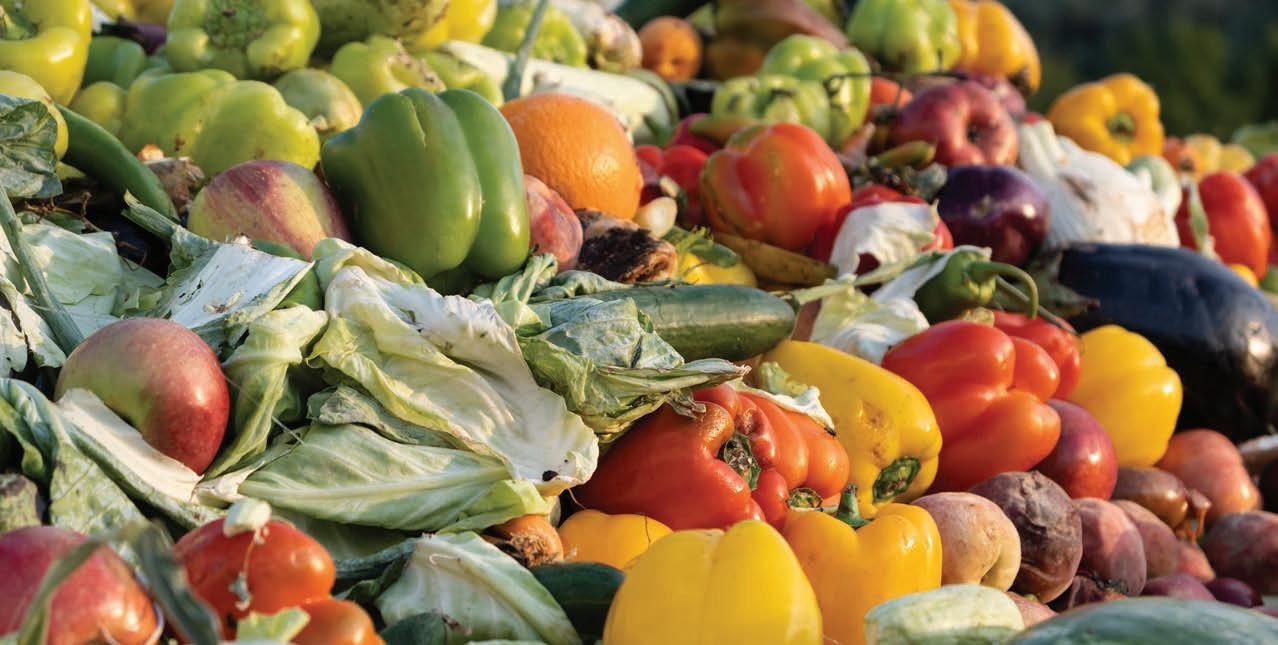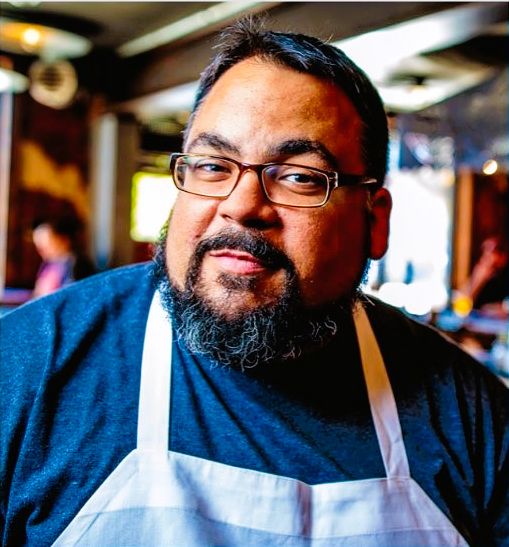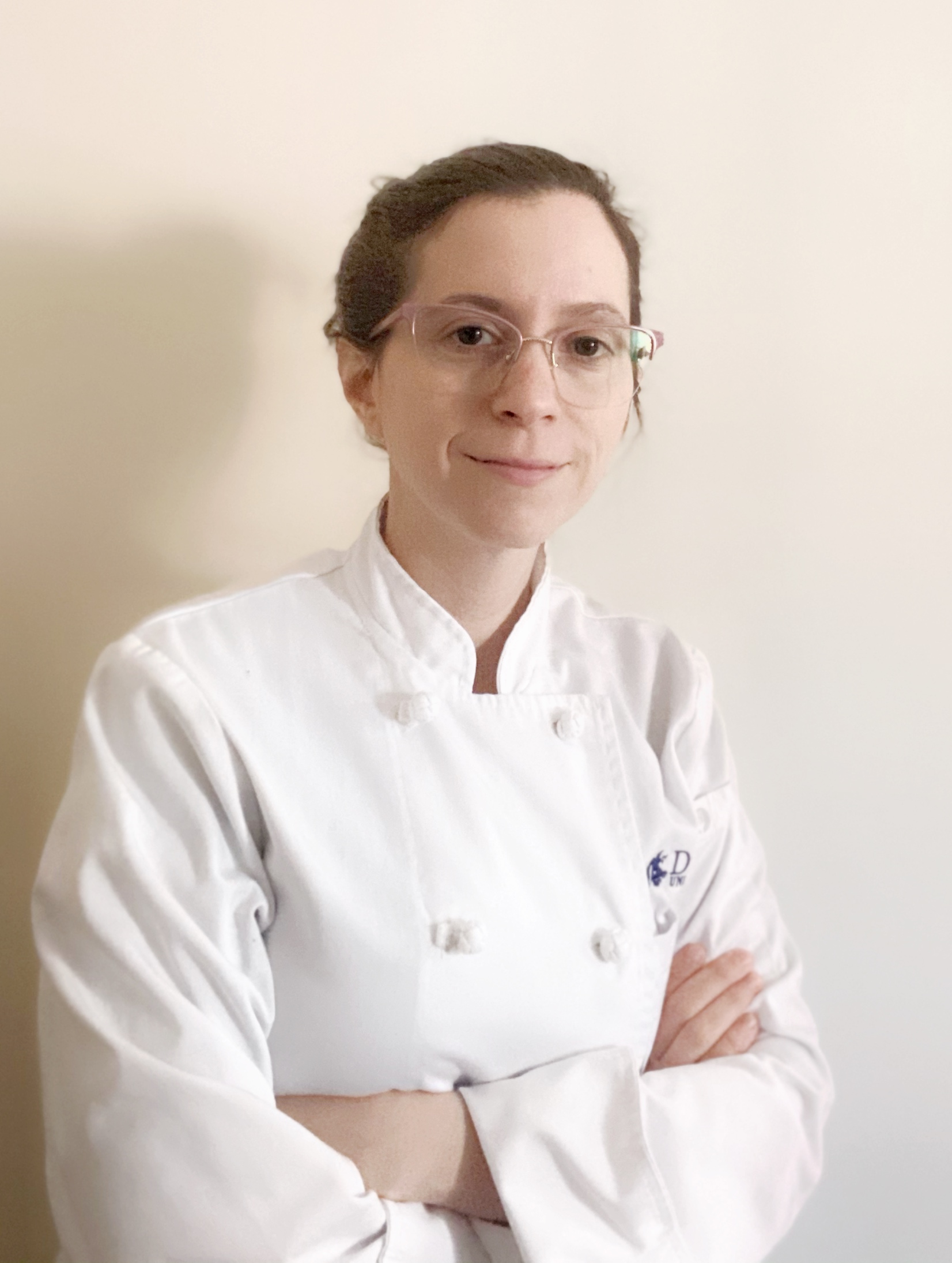
6 minute read
Trash to Cash: The Chef's Guide to Profitable Food Waste Solutions
from National Culinary Review (March/April 2025)
by National Culinary Review (an American Culinary Federation publication)

By Jonathan Deutsch, PhD, CHE, CRC
As chefs, we recognize the considerable effort involved in dining and meal preparation. Every step in the process impacts production costs and depletes essential resources, land, water, fuel, and labor, to name a few. The food industry is likely one of the largest consumers of these resources. Considering the work needed to create meals, seeing waste at any point in the supply chain is particularly disheartening. Food waste appears in various forms, including perfectly good vegetables left in fields due to labor shortages during harvest, overripe fish fillets spoiling in walk-in coolers after unexpectedly slow weekends, and half-eaten steaks returned to the kitchen because guests have overindulged in bread. Food waste presents a triple threat, environmental, financial, and social. According to ReFED, a national non-profit dedicated to solving food waste issues, 38% of all food in the U.S. goes unsold or uneaten, and most of that ends up as waste. This represents around 149 billion meals that could have nourished foodinsecure Americans and equates to $495 billion in lost value. There’s also a psychological cost for foodservice workers and chefs, many of whom have experienced food insecurity themselves. We enter this profession because we love food and despise seeing it wasted. Chefs occupy a unique position to combat food waste.
Every culinary student learns the principle of “full product utilization.” Indeed, many classical cuisine staples, stocks, soups, and charcuterie were designed to incorporate usable trim. However, numerous food scraps still don’t make it to menus without deliberate effort. One of my most effective early management decisions was replacing tall kitchen trash bins with clear countertop containers. When a misshapen carrot stares back at you, you’re likelier to attempt peeling it properly. This simple change immediately improved my food costs. While we can’t solve the entire food supply chain’s inefficiencies today, we can certainly improve practices in our own kitchens to prevent waste while simultaneously generating revenue and reducing costs. It’s not only environmentally responsible but also financially sound.



I spoke with six chefs who are the best in the business about their strategies for upcycling scraps into revenuegenerating items:
Chef Brian Lofink , Chief Development Officer at Wagyu Sommelier, says, “Every piece of food we prepare has potential. By getting creative with our scraps and reducing waste, we not only cut costs but also create new revenue streams that benefit the bottom line.”
Chef Jon Polley, the Institutional Impact Manager at the Center for Good Food Purchasing, emphasizes, “Don’t buy anything without a plan to use the entire item. Avoid purchasing fennel if you only want the fronds. When placing your order, consider the peels, bones, tops, cores, fat, and the whole package. Everything can be used in some way—so why not plan for it when it arrives at the back door?
Food waste signifies failure on many levels, but I believe it’s primarily a design failure.”
“When I teach culinary arts, I emphasize “mindful cooking,” which involves considering the potential of each ingredient.” Chef Ari Miller, the chef-in-residence at Poi Dog Sauces, explains, “When it comes to managing food scraps, you need to pay attention to what counts as scraps. It's a dynamic, ever-changing category because once you start using something, it stops being a scrap and becomes an ingredient. Then, something else turns into a scrap.” One example is Miller’s “infinity oil” from his former restaurant, Musi, a continuously evolving oil made from herb stems and scraps. The infused oil mash serves as an ingredient for hot sauce and as a base for herbed green pasta dough.
Cooking with scraps can be labor-intensive without the right tools. Therefore, quick and efficient processing is essential to adding value. Juicers, dehydrators, and blenders are your best allies in upcycling food waste.



Chef Rachel Sherman , a pastry chef who collaborates with the Associate Director of the Drexel Food Lab, suggests, "Dehydrating your scraps into powder is an easy way to enhance the flavor and color of dishes. You can blend those house-made powders into pasta, bread dough, and other baked goods. Use different blends as seasonings for fries or bar snacks or create your own onion powder.” Sherman also recommends fennel frond cheesecake and powdered apple peels to graham cracker crusts for improved flavor, fiber, and profit margins.
Chef Kiki Aranita , founder of Poi Dog (a restaurant and line of sauces), states, “I believe having a system to capture food scraps before they end up in the trash is the most crucial aspect. Thoughtful menu planning can make a significant difference. For example, if I’m serving kanpachi, anything that doesn’t go into poke can be transformed into a tostada. We’ve saved the skins, dehydrated them, and processed them in the food processor to create a furikake. This method should be included in the menu offerings, and you can charge a premium for it.”
Chef Alison Mountford , founder of Providencebased Ends+Stems, says, “In my years teaching about food waste reduction, I’ve never met anyone who enjoys throwing food away. With a bit of creativity and motivation, most ingredients and common “scraps” can be transformed into another dish, and it’s thrilling when a scrap becomes something delicious!” Mountford provides the example of steeping apple cores and peels in whiskey to infuse inexpensive whiskey with flavor. She then cooks down the mash to glaze ribs, creating revenue and flavor along the way

